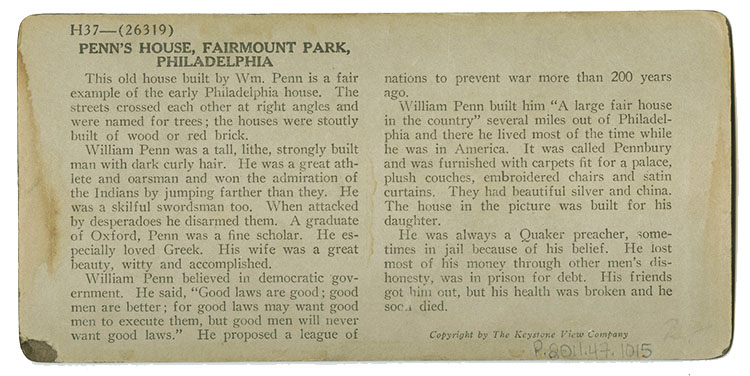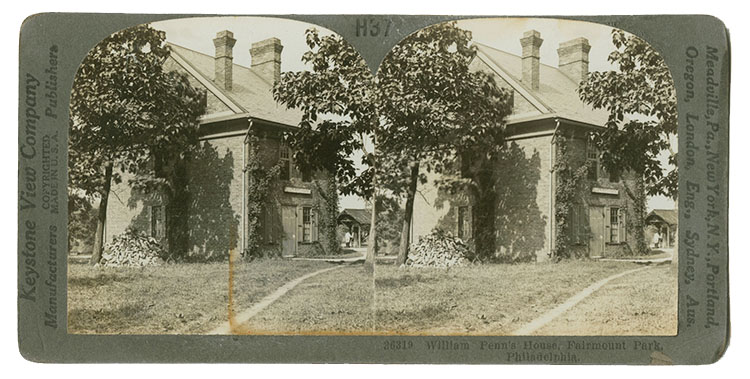A Better War: Post-Civil War, Re-remembering the American Revolution and the Founding of the Republic
Hover over image for details. Click Here for Next Stereograph
Keystone View Company, William Penn’s House, Fairmount Park, Philadelphia, ca. 1926
The overall text seems to establish William Penn as both a mythic figure – he is practically super-human – and as a role model whose virtues are realistically attainable. Case in point, Penn is erudite and insightful. Had more Americans modeled themselves after William Penn, World War I might have been avoided. The text implies that studying the founding of America could offer direction and healing for the future (much in the way that the National Museum at Independence Hall was intended for use following the Civil War).

William Penn’s House,
Fairmount Park, Philadelphia.
Keystone View Company, ca. 1926.
The Keystone narrative ends abruptly with Penn’s death seemingly pointing to the futility of even an influential life. Nonetheless, Penn’s political and civic contributions remain. His legacy of the Commonwealth of Pennsylvania and Philadelphia still flourish. The successes from his public life retain a permanency that those from his private life do not. This text affirms this value given to “place” in collective memory.
